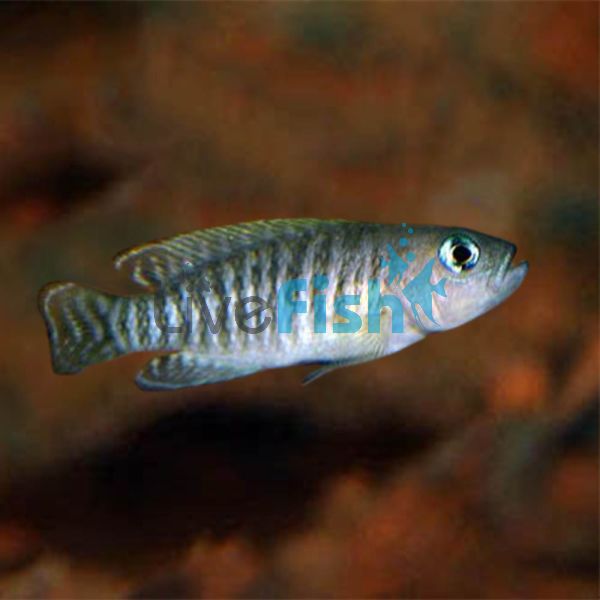Neolamprologus Multifasciatus 3.5cm
The Lamprologus Multifasciatus has easily got to be the most popular African cichlid of the decade. These nano cichlids have quickly risen in popularity for their small size, peaceful but personable behaviour, and most importantly how much they revolve their lives around shells. These fish are also relatively easy to care which makes them a fantastic species for newbie aquarists to expand their skills into keeping some more unique fish.
Lamprologus Multifasciatus
The Lamprologus Multifasciatus has easily got to be the most popular African cichlid of the decade. These nano cichlids have quickly risen in popularity for their small size, peaceful but personable behaviour, and most importantly how much they revolve their lives around shells. These fish are also relatively easy to care which makes them a fantastic species for newbie aquarists to expand their skills into keeping some more unique fish.
Lamprologus Multifasciatus typically reach lengths of only 3-4 cm, with females often slightly smaller than males. Their small size, however, doesn't mean they lack in aesthetics. Their slender bodies show off a silver-white base colour which is beautifully overlaid by dark, vertical stripes running from the cheek plate down to the tail. These fish also have a bright, emerald blue eye, which greatly contrasts the earthy colour body.
Breeding these fish is almost as easy as breeding guppies, as long as there is a group of fish kept with a supply of shells then these fish are bound to breed. One of the best things is that shell dwellers are fantastic parents, the female will lay eggs inside a shell which the parents then guard the fry until they hatch and grow up. They also maintain the population of the colony really well only breeding if there is enough space and resources.
Tank Recommendations for your Lamprologus Multifasciatus
As the Lamprologus Multifasciatus only reaches around 4 cm, an adult pair of these fish can easily be kept in a tank of about 40 litres. A large colony will however thrive in larger aquariums however they really do spend their time near the bottom of the aquarium so it is best to have an aquarium with a larger footprint. An aquarium setup for Multifasciatus is incredibly simple, all the tank really needs is a sand layer with at least 4 - 5 escargot shells per fish. Having a deeper substrate layer is actually somewhat recommended for these fish because of how well they move it around. These are also tropical fish that are best kept at 24-26 degrees with a pH of 7.0 - 8.5
Suitable Tank Buddies
The Lamprologus Multifasciatus can be kept with other smaller and relatively peaceful African cichlids. Since these fish require a higher PH of around 8 the tank mates chosen should be adaptable to this.
Usually Compatible
Smaller African cichlids such as black calvus, furcifer cichlids and julidochromis.
Sometimes Compatible
Frontosa, smaller Mbuna species, and other larger but somewhat peaceful African cichlids like Mdoka white lips.
Rarely Compatible
Aggressive African cichlid species like fuscodichromis and polystigma.
Feeding your Lamprologus Multifasciatus
Lamprologus Multifasciatus will take to aquarium foods very easily. They will take a wide range of pellets, flakes, and frozen foods. Giving them a varied diet, ensures that they have optimal nutrition.
The ideal diet would be good quality, small and slow-sinking food, supplemented with green matter like algae flakes or sheets. Feeding any foods with natural colour enhancers would also be great as this will really enhance the yellowfin and stripes on this fish.
| Scientific Name | Neolamprologus Multifasciatus |
|---|---|
| Care Level | Easy |
| Common Names | lamprologus Multifasciatus, Multies, Multi shell dweller |
| Diet | Omnivore |
| Fish Family | Cichlidae |
| Lifespan (years) | 5 |
| Max. Length (cm) | 5 |
| Min. Tank Volume (l) | 40 |
| Origin | Africa |
| Reef Safe | No |
| Sociability | Peaceful |
| Venomous | No |
| Water Conditions | 24-26° C, pH 7.0-8.5 |




